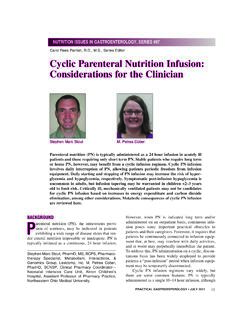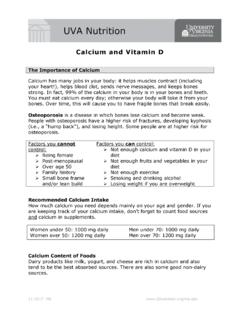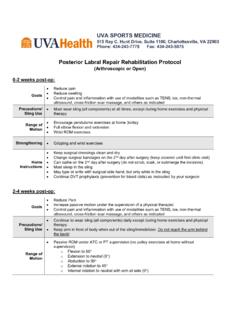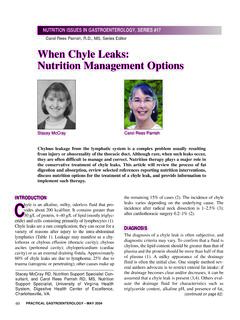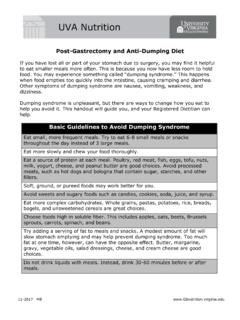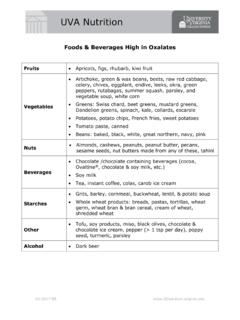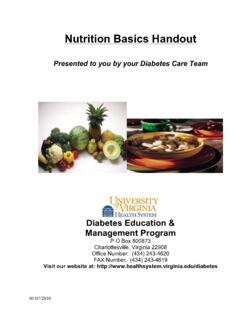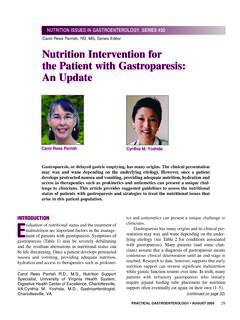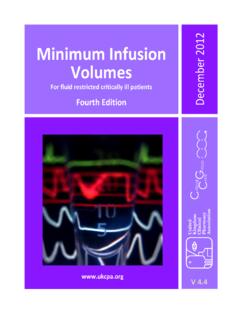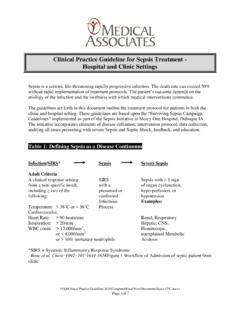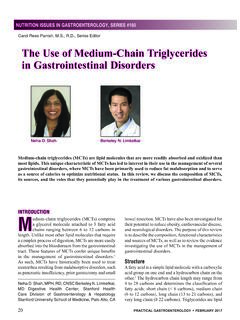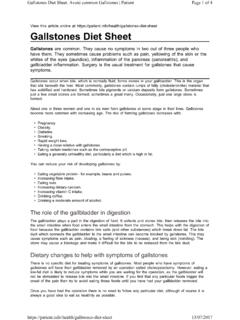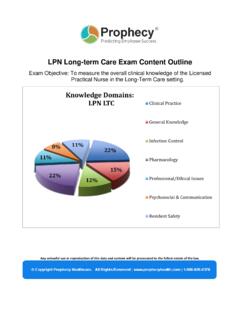Transcription of Carol Rees Parrish, R.D., M.S., Series Editor The ...
1 PRACTICAL GASTROENTEROLOGY JULY 200646 The Hitchhiker s Guide to Parenteral Nutrition Management for Adult PatientsINTRODUCTIONF eeding nutritionally compromised patients hasnever been as easy, or as hard, as it is today. Weare able to provide nutrients parenterally andenterally to patients who once would have been con-sidered unfeedable. Today s inpatient population issicker than patients in the past; the same may be saidfor patients needing specialized nutrition support. Thisresults in challenges to clinicians caring for thesepatients. Our goal in writing this article is to provide asuccinct and easy to follow guide for practicing clini-cians ordering parenteral guiding principle of nutrition support is to use theleast invasive and most physiologic method of chemicals directly into the bloodstream is theleast preferred method of providing nutrition support(1).
2 Yet, for a select subset of the population, intra-venous infusion of central parenteral nutrition (PN) orperipheral parenteral nutrition (PPN) is the only viablemeans to provide substrates for metabolism. PN carrieswith it inherent risks associated with the placement of acentral venous catheter. Due to the increased risk ofcomplications with PN therapy, including thrombosisand infection, a careful assessment of PN appropriate-NUTRITION ISSUES IN GASTROENTEROLOGY, Series #40 Howard Madsen, RD, , Nutrition SupportPharmacy Practice Resident and Eric H. Frankel,MSE, , BCNSP, Nutrition Support Coordina-tor, Covenant Health System, Lubbock, Rees Parrish, , , Series EditorWhile parenteral nutrition is a life-saving modality for people with intestinal failure, itis not without significant risk.
3 In the hospital setting, under certain clinical circum-stances, patients will also benefit from the use of parenteral nutrition. The purpose ofthis article is to aid the clinician in the safe provision of parenteral nutrition support,including development of the prescription, appropriate monitoring, and awareness ofthe issues involved in the preparation and stability of commonly used additives. Frequently asked questions and challenges that arise with the use of parenteral nutri-tion are also addressed. Howard MadsenEric H. Frankelness should precede placement of a central venouscatheter (1,2). Table 1 lists indications and contraindi-cations for PN.
4 PATIENT ASSESSMENTP rior to initiating PN, a nutrition assessment is neces-sary to determine nutrient needs and to anticipate anymetabolic changes that may occur due to the patient sunderlying condition, medications or concurrent thera-pies, etc. Table 2 provides a list of factors to considerwhen assessing a patient s nutritional status. Deter-mining energy and protein needs in the severely mal-nourished patient under physical stress, often ventila-tor-dependent with little mobility, can be illness brings further challenges in determin-ing the appropriate calorie level, as matching caloricexpenditure to caloric provision may be detrimental providing lower calorie levels initially has been advo-cated (3,4).
5 Calorie requirements often increase inrelation to stress, fever, and seizures, while a decreasein needs may be seen in the setting of sedation orreduced mobility. While indirect calorimetry is consid-ered the gold standard to determine caloric expendi-ture, formulas and calculations are frequently , no studies to date have demonstratedPRACTICAL GASTROENTEROLOGY JULY 200647 NUTRITION ISSUES IN GASTROENTEROLOGY, Series #40 The Hitchhiker s Guide to Parenteral Nutrition ManagementTable 1 Indications, Relative Indications and Contraindicationsfor Parenteral Nutrition Parenteral nutrition is usually indicated in the following situations Documented inability to absorb adequate nutrients via the GI tract such as.
6 Massive small-bowel resection/short bowel syndrome (at least initially) Radiation enteritis Severe diarrhea Untreatable steatorrhea/malabsorption ( , notpancre-atic insufficiency, small bowel bacterial overgrowth, orceliac disease) Complete bowel obstruction, or intestinal pseudo-obstruction Severe catabolism with or without malnutrition when GI tractis not usable within 5 7 days Inability to obtain enteral access Inability to provide sufficient nutrients/fluids enterally Pancreatitis accompanied by abdominal pain with jejunaldelivery of nutrients Persistent GI hemorrhage acute abdomen/ileus Lengthy GI work-up requiring NPO status for several days ina malnourished patient High output enterocutaneous fistula (>500 mL)
7 And inabilityto gain enteral access distal to the fistula site Trauma requiring repeat surgical proceduresParenteral nutrition maybe indicated in the following situations Enterocutaneous fistula Inflammatory bowel disease not responding to medical therapy Hyperemesis gravidarum when nausea and vomiting persistlonger than 5 7 days and enteral nutrition is not possible Partial small bowel obstruction Intensive chemotherapy/severe mucositis Major surgery/stress when enteral nutrition not expected toresume within 7 10 days Intractable vomiting when jejunal feeding is not possible Chylous ascites or chylothorax when low fat/fat free EN doesnot adequately decrease output Contraindications for Parenteral Nutrition Functioning gastrointestinal tract Treatment anticipated for less than 5 days in patients withoutsevere malnutrition Inability to obtain venous access A prognosis that does not warrant aggressive nutrition support When the risks of PN are judged to exceed the potential benefitsUsed with permission from the University of Virginia Health SystemNutrition Support Traineeship Syllabus (Parrish CR, Krenitsky J,McCray S).
8 Parenteral Module. University of Virginia Health SystemNutrition Support Traineeship Syllabus, 2 Important Factors to Consider when Assessing a Patient for Parenteral Nutrition Anthropometric Data include: Recent weight changes Current height and weight Lab values including: Comprehensive metabolic panel Serum magnesium level Serum phosphorus level Serum triglycerides as indicated (Table 18) Medical/Surgical History Anatomy (resections)/ostomies Pre-existing conditions such as diabetes, renal failure,liver disease, etc. Diet/Medication History include: Food/drug allergies Diet intake prior to admission Special diets Herbal/supplement use Home and current medicationsPRACTICAL GASTROENTEROLOGY JULY 200648 NUTRITION ISSUES IN GASTROENTEROLOGY, Series #40 The Hitchhiker s Guide to Parenteral Nutrition Managementbenefit by comparing the use of metabolic cart resultswith various formulas in terms of clinical of which calculation is used to estimatenutrient requirements, it is important to note that there isa lack of evidence correlating a given calorie and pro-tein level to clinical outcomes, and the controversy overwhich formula is best is ongoing.
9 Guidelines fordesigning PN formulations have been developed by var-ious organizations and experts in the field of specializednutrition support, some of which are listed on Table ACCESSLine type, nutrition formulation and other medicationneeds are inter-related and need to be approached in aunified manner. Table 4 describes the advantages anddisadvantages of intravenous access typically used forparenteral nutrition support. Nutritional limitationsassociated with those lines are also provided. Furtherdetails on these topics have been included in the follow-ing NUTRITION SUPPORT (PPN)Peripheral access is sometimes used for patients whoneed short-term (<2 weeks) nutrition support.
10 Becauseof the high volume of fluid needed, patients requiringfluid restriction are not candidates for this type of ther-apy. In order to meet a patient s nutritional needs usingPPN, infusion rates greater than 150 mL/hr may berequired; this limits the use of PPN to patients with nor-mal renal, cardiac, hepatic, and pulmonary to the risk of thrombophlebitis, these solutions aregenerally limited to an osmolarity of <600 900mOsm/L (12,14). See Table 5 and Table 6 for calcula-tion of mOsm in parenteral solutions. Even at 600 900mOsm, these solutions are hypertonic, hence anypatient with poor peripheral access should not receivePPN. Instead, alternatives should be considered, basedon the individual patient s circumstances.
